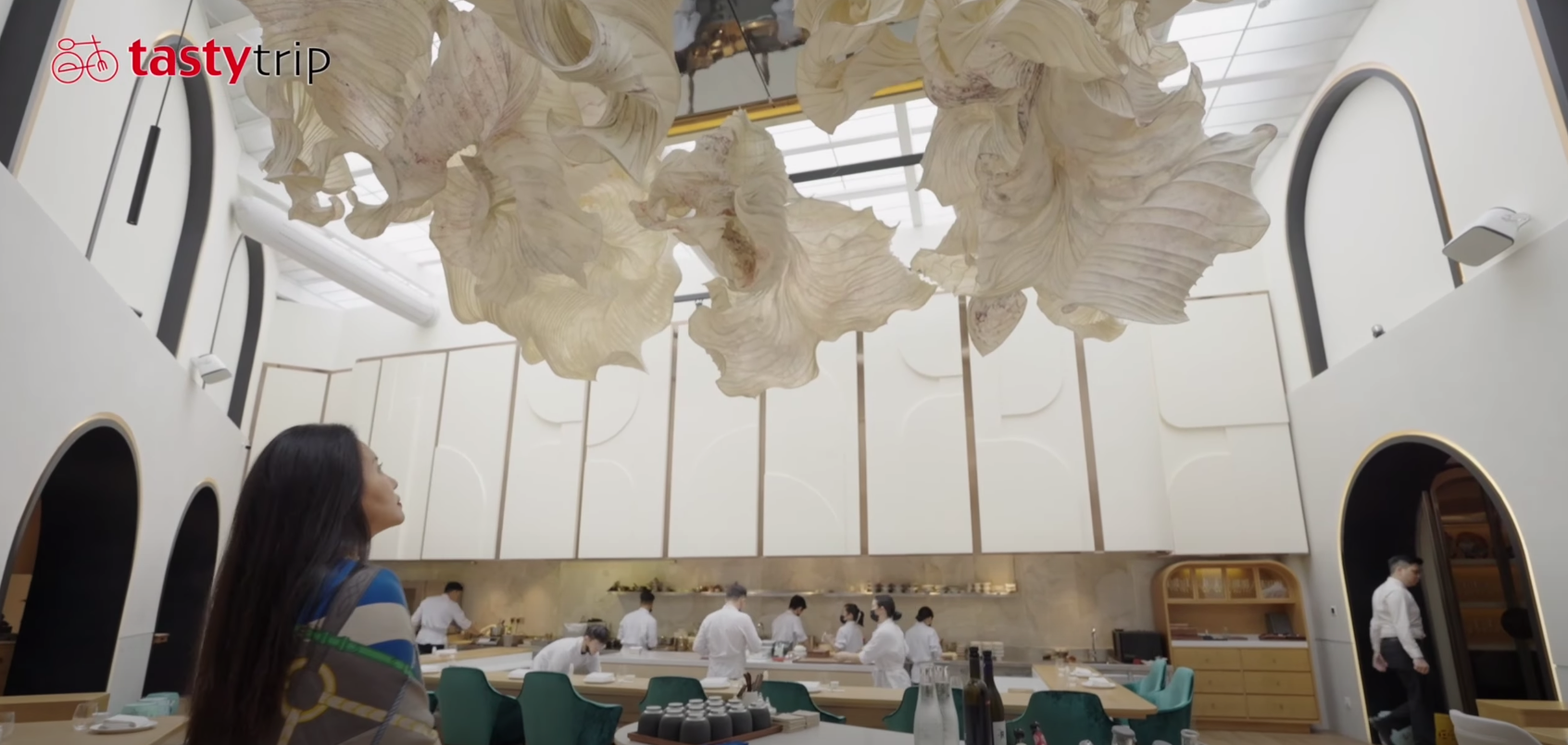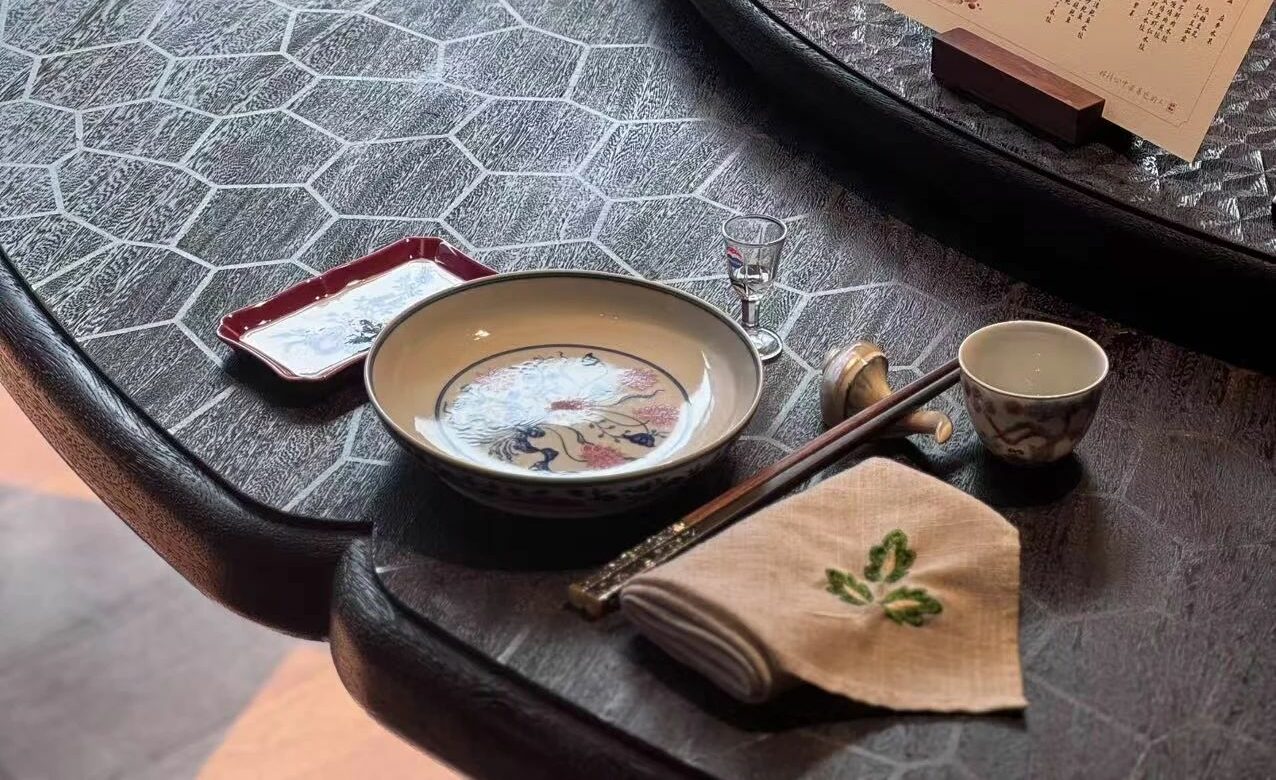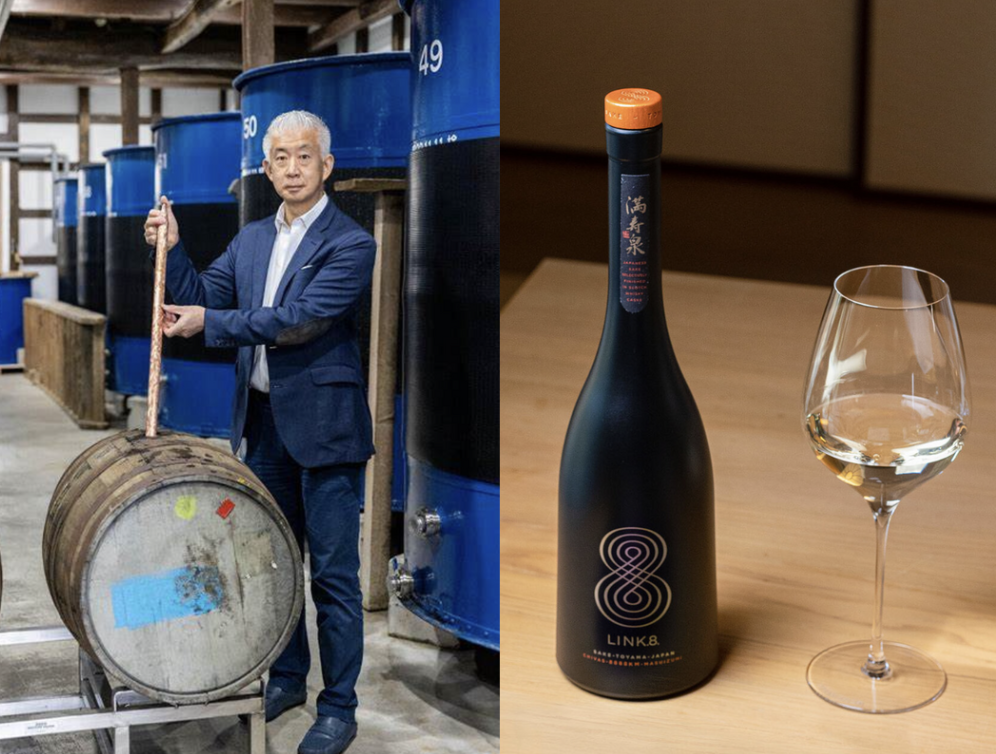I wonder if Chef Zor Tan would mind it if I said his cooking is new Chinese cuisine.
@TastyTrip Youtube
In Singapore, Restaurant Born has been ranked among the Asia’s 50 Best Restaurants for its first entry in less than one year after opening. Chef Zor Tan is a great mentee of André Chiang and is well versed in the knowledge, flavours and techniques of both French and Chinese cuisines. He brings to life the characteristics of both cuisines in his own way and tasting his food is like appreciating a beautiful play.

 @restaurantborn_instagram
@restaurantborn_instagram
Zor Tan is a Malaysian-born Chinese. He trained with André for 12 years, working as Executive Chef at Restaurant Andre and Restaurant Raw in Taipei. Zor was later appointed Executive Chef of Sichuan Moon in Macau, which received wide acclaim, garnering 2 Michelin stars in its first year, followed by a debut on Asia’s 50 Best Restaurant list in 2020, at No.23. As a result, Zor started his own restaurant and decided to base his cuisine on his roots. Each dish is storytelling on the plate, encapsulating a harvest of Zor’s childhood memories and professional journey.
Housed in a century-old building that was a depot to rickshaws and today an icon of Singapore’s history, Born has a double-height glass ceiling that enables an enormous space bathed in light, with colonnade and arch design creating an interior of lush theatricality where one can easily focus on the food and connect with stories behind. Anchoring the main dining hall is an eye-catching, powerful paper sculpture designed by Dutch artist Peter Gentenaar. The sculpture seems to suggest that every infant is born with wrinkled skin and we all follow the Circle of Life.


For Zor Tan, food represents the culinary expression of “best life”; his cooking is a weave of his Hokkien root with Cantonese, Sichuan, and Taiwanese influences combined with French techniques. Perhaps influenced by André’s Octaphilosophy, Zor’s cuisine is expressed through his 9 guiding principles: Birth, Roots, Memories, Craft, Relationship, Vicissitudes, Time, Progress and Legacy. Through such prisms, we are able to take a glimpse into the creation of each dish.
The menu begins witha wonderful swirl of Pickles & Snacks, inspired by Zor’s family belief that “contentment comes from having a full belly”. Sichuan cuisine has a large focus on the variety of dishes, especially with cold plates which predominantly feature pickles. Here we have Winter Melon with Purple Shiso Jus, Pickled Japanese Daikon Skin, Jellyfish Pickled with Mountain Chilli, and many more. Delicious!


 Pickles & Snacks
Pickles & Snacks
Chicken Skin Mille Feuille is impressive. Up to 45 pieces of chicken skin are seasoned and then baked until crispy. Aubergine puree is layered between the chicken skin and topped with caviar, baby coriander leaves and pickled shallots. The dish is inspired by Zor’s mother’s fried aubergine with pork belly and is executed with André’s strict standards on culinary finesse. There is no doubt about the technique, only that the chicken skin seems to have overshadowed the flavour of the aubergine.
Taro puff with salted egg yolk custard filling combines honeycomb taro puff and steamed custard bun. Take a bite and the luscious filling will be oozing out of the crusty puff – a familiar and much-loved flavour enjoyed by local Chinese. Next is bao filled with aged Wagyu tartare marinated by Sichuan peppercorns and chilli oil, served with homemade seared oyster emulsion, and air-dried beef. The Japanese rice puff is fried to perfect crispiness.


 Chicken Skin Mille Feuille/Taro Puff/Bao
Chicken Skin Mille Feuille/Taro Puff/Bao
At this stage, feelings of satiety started to rise. But then it came an elegant artichoke dish: Jerusalem artichoke is slow cooked with burnt butter chicken stock, skinned, blended with cream, and seasoned with salt and sugar. It’s finished by a dash of umami caviar to elevate the fresh, mild taste of lily bulbs.
A tribute to André’s famous foie gras parfait, but Zor recreates this dish in his own way at Born. Chicken liver is infused into a chawanmushi, paired with smoked oil and chopped morel mushrooms. The flavour is rich, but the morels were too chopped up to maintain their texture. Integrating ingredients while retaining their characteristics is not an easy task. Seasonal white fish steamed and finished over binchotan is served with fermented yellow imperial chilli from Hainan and jade fungus from Yunnan, with a slight lemony aroma rising from Sichuan green peppercorn oil. The jade fungus echoes the paper sculpture on the ceiling. Surprisingly, the dish comes with a complex charred aroma or wok-hei which is usually obtained in stir-fried dishes.



 Jerusalem Artichoke/Chicken Liver Chawanmushi/White Fish with Chili and Pepper
Jerusalem Artichoke/Chicken Liver Chawanmushi/White Fish with Chili and Pepper
Smoked eel was originally a nourishing soup dish made for Zor’s wife when she gave birth to their first child. Applying a classic French chou farci cooking technique, fresh barramundi fish maw is filled with Chinese cabbage trimmings and smoked eel. The stuffed fish maw is wrapped with Chinese cabbage leaf then caul fat, and pan-seared, and topped with julienned raw Chinese cabbage stem and fried local fish maw. Broth is made from smoked eel bones and trimmings together with chicken stock and onions. Spring onion oil is dripped before serving. It’s highly complex, rich in nutrients but doesn’t strike heavy in taste.

 Smoked eel
Smoked eel
Alaskan King crab is steamed whole, shelled and brushed with fermented yellow soybean paste. Crab miso filled glutinous rice ball is a reminder of family reunion. The use of toro oil and basil oil warms the appetite and is similar to Sichuan Moon’s crab dish. The sauce is prepared in a French bisque style. Both cooking techniques are well executed.

 Alaskan King Crab with Rice Ball
Alaskan King Crab with Rice Ball
“Risotto” is made by cooking barley in chicken stock, then mixed with pearl corn from Genting Highlands, sunflower seeds, shallots cooked in white wine, and sun-dried tomatoes that have been baked till dehydrated. It’s overlaid with a layer of pearl corn that has been steamed and thinly sliced and coupled with pigeon jus seasoned with fermented black bean and fresh green Sichuan peppercorns. A bright, well-defined mouthfeel with an excellent execution.
First dessert is double-boiled bird’s nest, which is sweet and refreshing as Aiyu jelly. Another dessert is French chestnut puree piped at the base, together with caramel as well as cubes of Chinese candied chestnuts and black garlic, topped with puffed rice. An Asian rendering of Mont Blanc.

 Risotto/Double-boiled Bird’s Nest
Risotto/Double-boiled Bird’s Nest
Zor Tan’s culinary finesse is evident in his French-inspired Chinese cuisine, particularly his knowledge of Sichuan cooking. His ability to use both techniques to a high degree of sophistication to create unique modern Chinese cuisine is a rare feat among the younger generation of chefs. Building on solid French culinary techniques and thorough understanding of Sichuan cuisine, Zor could potentially carve out a groundbreaking brand for his contemporary cuisine. Zor’s laid-back and well thought out menu strikes a perfect balance between complexity and spontaneity. In my mind, the only person who has achieved the same level of understanding of French and Chinese cuisine is Vicky Cheng, the chef of Wing and Vea in Hong Kong.
After winning Asia’s 50 Best, Restaurant Born should not be far away from scooping two Michelin stars, giving Zor his next big moment and making Born one of the toughest restaurants in Singapore to get a reservation in the near future.
Photo: Katherine/official instagram


 @restaurantborn_instagram
@restaurantborn_instagram



 Pickles & Snacks
Pickles & Snacks

 Chicken Skin Mille Feuille/Taro Puff/Bao
Chicken Skin Mille Feuille/Taro Puff/Bao


 Jerusalem Artichoke/Chicken Liver Chawanmushi/White Fish with Chili and Pepper
Jerusalem Artichoke/Chicken Liver Chawanmushi/White Fish with Chili and Pepper
 Smoked eel
Smoked eel
 Alaskan King Crab with Rice Ball
Alaskan King Crab with Rice Ball
 Risotto/Double-boiled Bird’s Nest
Risotto/Double-boiled Bird’s Nest









